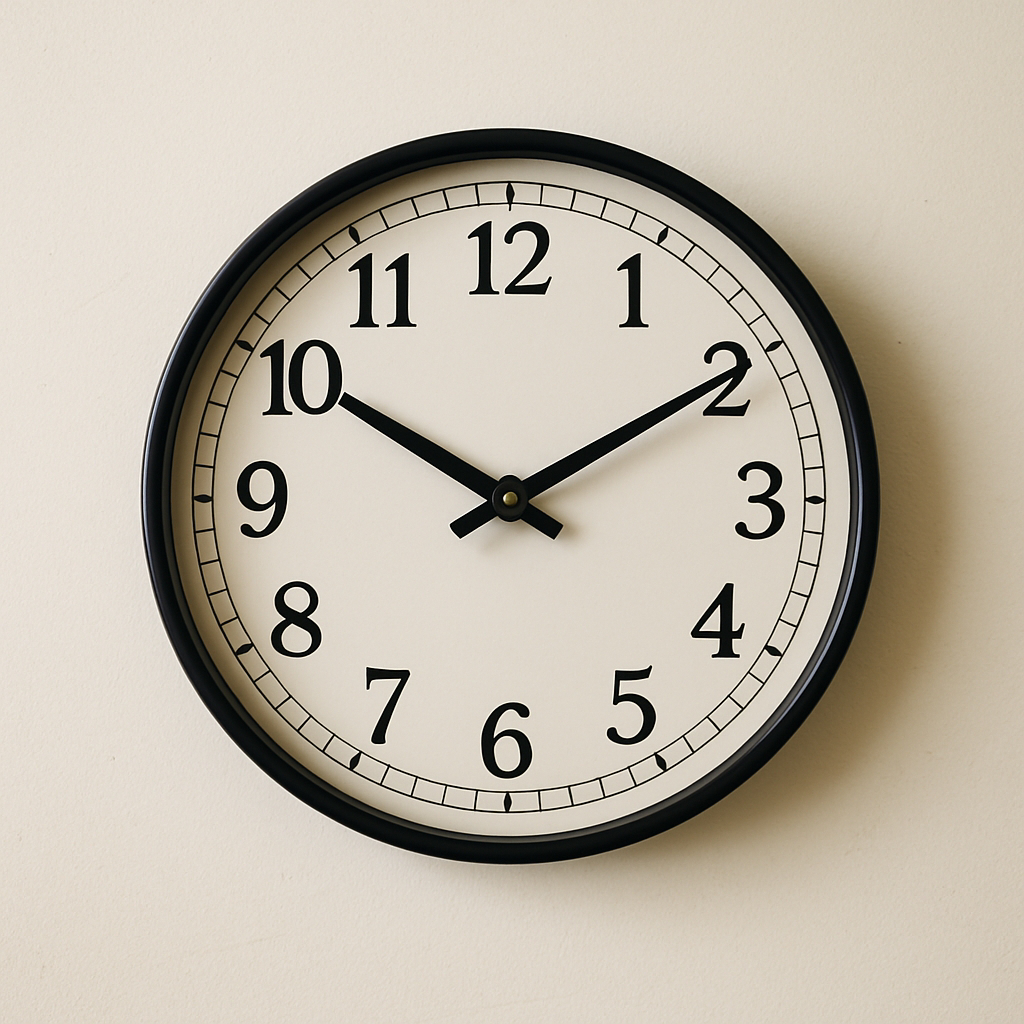Why AI Struggles to Generate Clocks at Specific Times (and Why It Always Shows 10:10)
If you’ve ever asked an AI image generator to create a clock showing a specific time—say, 3:30—you might be puzzled by the result. Most of the time, the clock ends up pointing to something else entirely. And strangely enough, AI-generated clocks often default to the same time: 10:10.
But why? Let’s break it down.
The Mystery of 10:10
First, you should know that 10:10 isn’t random. In fact, it's the standard clock display time used in advertisements and stock images for decades. Why?
Symmetry: The hands form a pleasing "V" shape, framing the brand logo or clock face evenly.
Positive Emotion: It resembles a smile, subtly triggering a happy or relaxed feeling in the viewer.
Logo Visibility: The brand name, usually located near the top center of the clock, is not covered by the hands.
Because of these reasons, a vast majority of clock photos on the internet show 10:10. This is what AI has been trained on.
How AI Learns Visuals
AI image generators like DALL·E or Midjourney don’t "know" time the way we do. They learn patterns from images across the internet. So when you prompt the AI to generate a clock, it's not looking at a mental model of a clock mechanism—it’s just guessing based on what it has seen most often.
Since 10:10 dominates the dataset, that’s the pattern AI recognizes as “correct.” This results in repeated outputs showing that time, even when you ask for a different one.
Why AI Gets 3:30 Wrong
Here’s why AI struggles to draw a clock showing exactly 3:30:
Lack of labeled data: Most clocks online are unlabeled. AI sees images but doesn’t always know what time they show.
Abstract reasoning: AI lacks the conceptual understanding to place the hour and minute hands accurately unless explicitly trained to do so.
Bias toward common patterns: Since 10:10 is everywhere, the model assumes it’s the “default” look for a clock.
Ambiguity in prompts: Even a clear prompt like “a clock showing 3:30” can confuse AI unless it has seen enough variations of that specific time.
The Future: Can This Be Fixed?
Yes, but it requires better datasets and more focused training. To generate a clock at any time:
AI needs labeled datasets with images of clocks at all hours.
It may require logic-based post-processing to validate where hands should be.
Alternatively, a hybrid model that combines image generation with a clock-drawing algorithm could fix this issue.
Conclusion
AI isn’t failing because it's dumb. It’s failing because it’s imitating what it’s seen, and what it has seen is overwhelmingly biased toward 10:10. This reveals a deeper truth about AI: it reflects our habits, preferences, and patterns—flaws and all.
So next time you ask an AI to draw 3:30 and it gives you 10:10, just remember: it's not being lazy—it's just been overexposed to smiley clocks.

Join the conversation